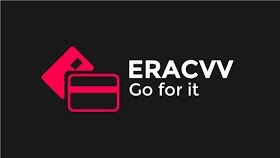
If you're a credit card user, you need to be very careful with hiding and concealing your credit card details to prevent them from falling into the wrong hands. The beginner level of security like your name, card number, issuance, and expiry date is printed on it and it is advised not to share it with any person, not even with people that you know.
This article concerns an important part of your credit card security and details- a 3-digit number printed on your credit card known as the CVV. Read below to find out everything you need to know about CVV and a CVV shop.
What Does CVV Stand For?
The full form of CVV is "Card Verification Value". CVV is a 3-digit code that companies mention on the backside of the credit card. This number is essential for carrying out online purchases or transactions.
You must not share this number with anyone to protect you against the misuse of your credit card. The credit card issuers will provide you with a CVV based on your debit card number, expiry date, and issuer's unique code and service code.
Everything You Need to Know About a CVV Shop
It is an online platform on which people sell credit card information. A CVV shop is also known as "dumps", which is not entirely the same as a CVV shop but close. Some people can acquire the credit card information of the users through foul means such as hacking.
Normally, people who perform such criminal acts are known as hackers. Such people find a way to get into a company's databases and extract credit card information, which is something you don't want to be a target of such crimes. Sometimes, they also install skimmers in the sale system which makes their work even easier.
Once the hacker is successful in retrieving information, he puts up the stolen credit cards on sale on CVV shops. People who are interested in buying them sign up and enter their information so that they can buy items online.
These shadowy cyber-stores are a go-to place for online fraudsters where they find different packages and bundles of cardholder detail, holder name, issuance and expiry date, CVV number, and postcode.
Mostly, web-based keyloggers steal this data. It is an easy program that manufacturers have designed to extract data from web server apps. They perform the function of grabbing and ripping data given by visitors. This information includes all the data which customers provide at the time of checking out of the online store.
Before moving on, you must know that the CVV on the shop and the credit card is different. They aren't identical but pretty much the same because the cards are sold as a whole including the CVV number mentioned on the back. Buyers have to pay a few dollars before buying the CVV and then check if they work or not.
How To Prevent Credit Card Fraud?
There are many instances where we use our complete credit card information to purchase something online but, once the company catches a fraudulent transaction, it will become void.
Many credit card companies have put in efforts to stop such abhorrent crimes. They recommend people to not enter their CVV's no matter the situation. The shop servers do not store these CVV's for security reasons. So, if any credible store asks you for the CVV, they won't be able to obtain the information even if somebody hacks the server.
It is advisable that you stick with only the reputable websites that millions trust and not go for the shady ones, as there are chances of things going downhill if you trust an online store or individual sellers. The trusted websites have security encryption that keeps your vital information safe.
Now you know, why antivirus programs and apps are lifesavers for us! It saves you from intruders who may sneak in to steal your personal and financial information and of course, malware! Moreover opening unknown email attachments, creepy social media posts from unknowns is also a way you might let hackers breach your information.
CVV and Dumps- How Are They Different?
In easy terms, CVV is a number that holds credit card information that is attainable from CVV shops. On the other hand, dumps are the raw data found on the black-colored strip in the back of your card which is termed as "mag strip".
Once hackers get their hands on the CVV, they skim the card to obtain useful stats. They do it with the help of a POS device or directly intrigue networks. Dumps are copyable on new credit cards and one can use them in physical stores while CVV only lets you make online purchases of goods and services.
It is now evident that dumps hold more value than the CVV, but that doesn't mean you pay any heed to protect your CVV from unreliable sources.
What Does Dynamic CVV Mean?
There are two types of CVVs: static and dynamic. The one with 3 digits which we discussed above is static CVV while dynamic CVV works like an OTP, it generates only when you buy something. With the increasing fraudulent activities over the internet, credit card companies are adopting more latest technologies to be one step ahead of these hackers.
Once you make an online transaction, you receive an SMS or an email with a dynamic CVV which expires immediately when you check out. In this way, the credit card is safe because the shops won't be able to sell incomplete dumps. Dynamic CVV is harder to hack because the two-factor authentication has taken the world by storm and has proved to be a great anti-theft measure.
In some cards, manufacturers fit mini electronic screens which tend to generate new dynamic CVV's every 30-60 minutes. Such CVVs are the future, and some credit card companies swear by it! It will give a tough time to hackers in extracting information and selling them as they won't have the complete information and will most likely not work.
Final Thoughts
CVV's are like the backbone of our credit cards, this is why companies ask the holders to refrain from sharing them with anybody. As the rate of cyber-crime is increasing everyday, credit card companies are looking for multiple ways to safeguard the information of their users. Some companies use dynamic CCvs, but they are yet to come out on a bigger scale. If it is successful, then debit cards may also use such mechanisms.
* This is a contributed article and this content does not necessarily represent the views of techtimes.com





